Top 10 Best Dinosaur Names
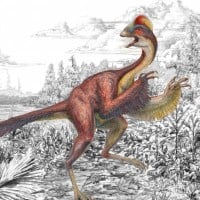 Anzu is a genus of large oviraptorosaurian dinosaurs from the late Cretaceous of North Dakota and South Dakota, US.
Anzu is a genus of large oviraptorosaurian dinosaurs from the late Cretaceous of North Dakota and South Dakota, US. The first oviraptor-like theropod to be discovered in North America, Anzu was also one of the biggest, tipping the scales at up 500 pounds (or an order of magnitude more than it's better-known relative Oviraptor). The name of this feathered dinosaur derives from Mesopotamian folklore; Anzu was a winged demon who stole the Tablet of Destiny from the sky god Enlil.
Despite what you may think, the Greek root "daemon" in Daemonosaurus doesn't necessarily mean "demon," but "evil spirit"--not that this distinction would matter if you were being chased by a pack of these toothy, 50-pound theropods. The importance of Daemonosaurus is that it was closely related to the better-known North American Coelophysis, and thus was one of the earliest true dinosaurs.
From its name, you might assume that Gigantoraptor was the biggest raptor that ever lived, outclassing even Velociraptor and Deinonychus. The fact is, though, that this impressively named, two-ton dinosaur wasn't a true raptor at all, but a late Cretaceous theropod closely related to Oviraptor. (For the record, the largest true raptor was the 1,500-pound Utahraptor).
Why do central Asian (and North American) dino-birds get all the coolest names? Khaan is Mongolian for "lord," as you might already have guessed from the famous Mongolian warlord Genghis Khan (not to mention KHAN! From Star Trek II). Ironically, though, Khaan wasn't all that big or fierce, only measuring about four feet from head to tail and weighing 30 pounds.
Not all dinosaurs have equally impressive names: it takes a particular type of paleontologist to come up with a name that's so striking, so descriptive, that it forever fixes a dinosaur in the public imagination, no matter how scant the fossil evidence might be. Here's an alphabetical list of the 10 most memorable dinosaur names, ranging from Anzu to Tyrannotitan. (Just how cool were these dinosaurs?
A relatively new addition to the dinosaur bestiary, Iguanacolossus (you don't need to have studied Greek to translate its name as "colossal iguana") was a multi-ton ornithopod of the late Cretaceous period. And yes, in case you were wondering, this plant-muncher was a close relative of Iguanodon, though it wasn't even remotely related to modern iguanas!
Why do central Asian (and North American) dino-birds get all the coolest names? Khaan is Mongolian for "lord," as you might already have guessed from the famous Mongolian warlord Genghis Khan (not to mention KHAN! From Star Trek II). Ironically, though, Khaan wasn't all that big or fierce, only measuring about four feet from head to tail and weighing 30 pounds.
The difficult-to-pronounce Stygimoloch hovers uneasily on the line dividing the best and worst dinosaur names. What puts this pachycephalosaur, or "thick-headed lizard," in the former category is that its name translates roughly as "horned demon from the river of hell," a reference to the vaguely satanic appearance of its skull. (PS, some paleontologists insist Stygimoloch was a growth stage of Pachycephalosaurus.)
With a name like Supersaurus, you'd think this 50-ton sauropod of the late Jurassic period liked to prance around in a cape and tights and tackle evildoers. Ironically, though, this "super lizard" was far from the biggest plant-eater of its breed; some of the titanosaurs that succeeded it weighed more than 100 tons, consigning Supersaurus to relative sidekick status.
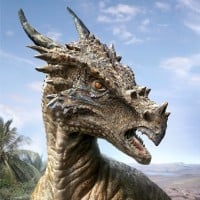 Dracorex is a dinosaur genus of the family Pachycephalosauridae, from the Late Cretaceous of North America.
Dracorex is a dinosaur genus of the family Pachycephalosauridae, from the Late Cretaceous of North America.Sometimes, the "wow factor" of a dinosaur's name is inversely proportional to the amount we know about it. Tyrannotitan wasn't a true tyrannosaur, but a large theropod of middle Cretaceous South America that was closely related to Giganotosaurus; beyond that, though, it's fairly obscure (which makes it similar to another controversial dinosaur on this list, Raptorex).
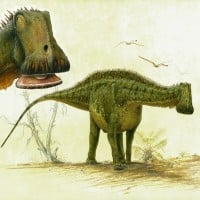
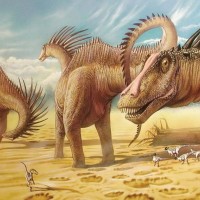 Native to what is now Argentina, Amargasaurus is a sauropod dinosaur from the Early Cretaceous period. It features distinctive, elongated neural spines on its neck and back, possibly for display or protection. Unlike other sauropods, it was relatively small, measuring about 30 feet in length.
Native to what is now Argentina, Amargasaurus is a sauropod dinosaur from the Early Cretaceous period. It features distinctive, elongated neural spines on its neck and back, possibly for display or protection. Unlike other sauropods, it was relatively small, measuring about 30 feet in length.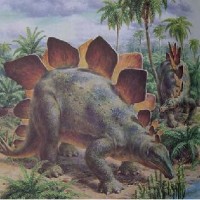 Stegosaurus is a type of armored dinosaur. Their fossil bones have been found in rocks dated to the Late Jurassic period, between 155 and 150 million years ago, in the western United States and Portugal.
Stegosaurus is a type of armored dinosaur. Their fossil bones have been found in rocks dated to the Late Jurassic period, between 155 and 150 million years ago, in the western United States and Portugal. Tyrannosaurus, meaning "tyrant lizard", from the Ancient Greek tyrannos, "tyrant", and sauros, "lizard" is a genus of coelurosaurian theropod dinosaur. It also had a tremendous bite force, the strongest of any Dinosaur and living terrestrial animal. Its bite force reached up to 12,800 pounds (roughly... read more
Tyrannosaurus, meaning "tyrant lizard", from the Ancient Greek tyrannos, "tyrant", and sauros, "lizard" is a genus of coelurosaurian theropod dinosaur. It also had a tremendous bite force, the strongest of any Dinosaur and living terrestrial animal. Its bite force reached up to 12,800 pounds (roughly... read more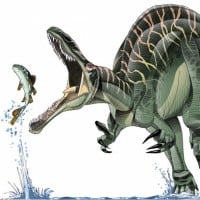 Suchomimus is a genus of large theropod dinosaur with a crocodile-like skull that lived between 125–112 million years ago, during the Aptian to early Albian stage of the Cretaceous period in Niger, Africa.
Suchomimus is a genus of large theropod dinosaur with a crocodile-like skull that lived between 125–112 million years ago, during the Aptian to early Albian stage of the Cretaceous period in Niger, Africa. Giganotosaurus is a genus of theropod dinosaur that lived in what is now Argentina, during the early Cenomanian age of the Late Cretaceous period, approximately 99.6 to 97 million years ago.
Giganotosaurus is a genus of theropod dinosaur that lived in what is now Argentina, during the early Cenomanian age of the Late Cretaceous period, approximately 99.6 to 97 million years ago.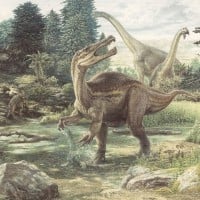 Baryonyx is a genus of theropod dinosaur which lived in the Barremian stage of the early Cretaceous Period, about 130–125 million years ago.
Baryonyx is a genus of theropod dinosaur which lived in the Barremian stage of the early Cretaceous Period, about 130–125 million years ago.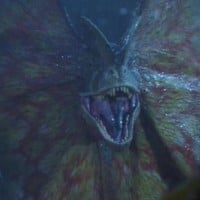
 Triceratops is a genus of herbivorous ceratopsid dinosaur that first appeared during the late Maastrichtian stage of the late Cretaceous period, about 68 million years ago in what is now North America.
Triceratops is a genus of herbivorous ceratopsid dinosaur that first appeared during the late Maastrichtian stage of the late Cretaceous period, about 68 million years ago in what is now North America.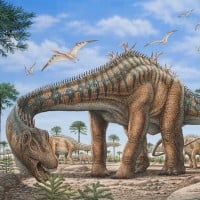 Diplodocus is a genus of diplodocid sauropod dinosaurs whose fossils were first discovered in 1877 by S. W. Williston.
Diplodocus is a genus of diplodocid sauropod dinosaurs whose fossils were first discovered in 1877 by S. W. Williston.